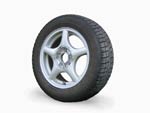

Sprachen:

Nanoparticles can contribute to stronger, lighter, cleaner and “smarter” surfaces and systems. They are already being used in the manufacture of scratchproof eyeglasses, crack-resistant paints, anti-graffiti coatings for walls, transparent sunscreens, stain-repellent fabrics, self-cleaning windows and ceramic coatings for solar cells.

Nanotechnology can be used to increase the safety of cars. Nanoparticles can improve adhesion of tyres to the road, reducing the stopping distance in wet conditions. In addition, the stiffness of the car body can also be improved by use of nanoparticle-strengthened steels. Moreover, ultra-thin transparent coatings can be applied to displays or panes to avoid glare or condensation, and in the future it may be possible to produce transparent car body parts to improve all-round vision.
Nanotechnology can be applied in the processing of food. In addition, food packaging – and, as a result, food safety – can be improved through nanomaterials placing anti-microbial agents on coated films and modifying gas permeability as required for different products.
Nanomaterials are also being used in biology and medicine in a wide variety of ways. Examples include products for drug delivery and gene therapy, tissue engineering, DNA probes and nanoscale “biochips”. More...

This summary is free and ad-free, as is all of our content. You can help us remain free and independant as well as to develop new ways to communicate science by becoming a Patron!